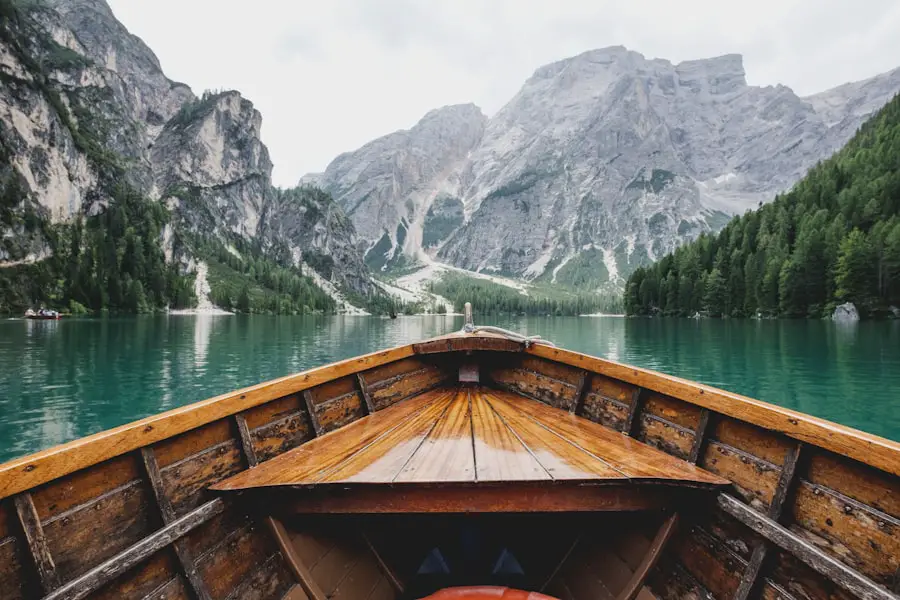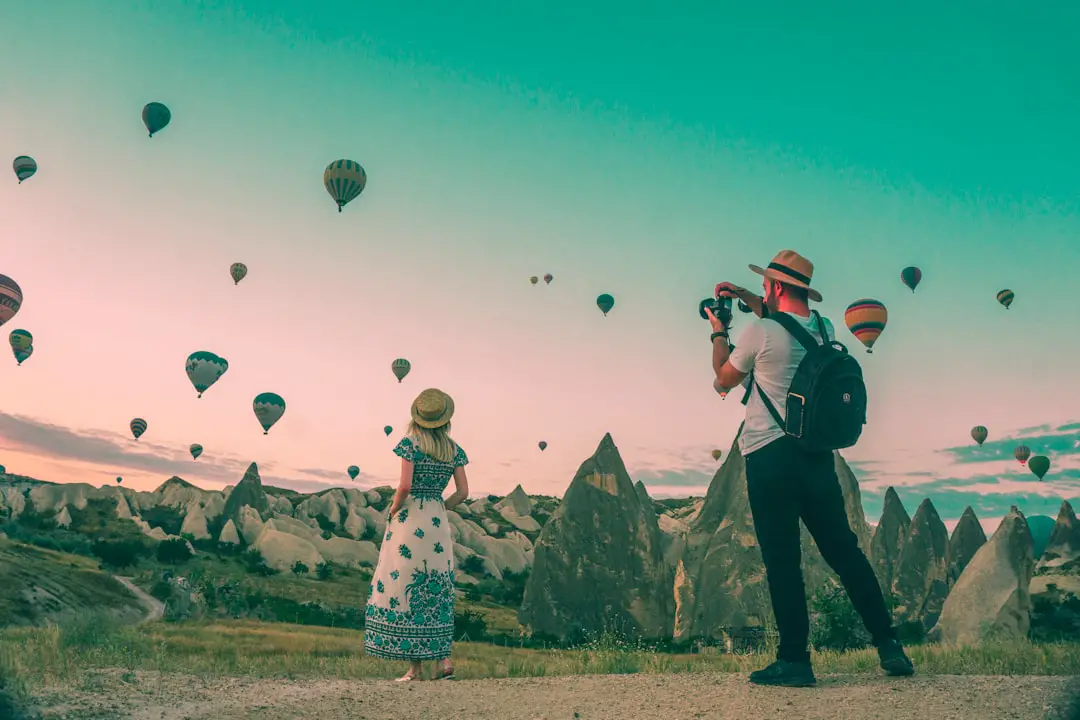Fiji, an archipelago of over 300 islands in the South Pacific, is renowned for its stunning natural beauty, vibrant culture, and warm hospitality. The country is divided into two main islands, Viti Levu and Vanua Levu, with the capital city, Suva, located on Viti Levu. The islands are characterized by their lush rainforests, pristine beaches, and coral reefs teeming with marine life.
Fiji’s unique blend of indigenous Fijian culture and colonial history creates a rich tapestry of traditions, languages, and customs that captivate visitors from around the globe. The Fijian people are known for their friendliness and welcoming nature, often greeting visitors with a traditional “bula,” which means “hello” or “life.” This spirit of hospitality is deeply ingrained in Fijian culture, making it a popular destination for travelers seeking both adventure and relaxation. From the moment one steps off the plane, the vibrant atmosphere and breathtaking landscapes set the stage for an unforgettable experience.
Whether you are looking to explore the underwater wonders of the Great Barrier Reef or immerse yourself in the local culture through traditional ceremonies, Fiji offers a diverse range of experiences that cater to every type of traveler.
Key Takeaways
- Fiji is a beautiful island nation in the South Pacific known for its stunning beaches, clear waters, and vibrant culture.
- The weather in Fiji is warm and tropical year-round, with a wet season from November to April and a dry season from May to October.
- Peak season for travel to Fiji is during the dry season, from May to October, when the weather is sunny and perfect for outdoor activities.
- Off-peak season for travel to Fiji is during the wet season, from November to April, when there are fewer tourists and lower prices.
- Special events and festivals in Fiji include the Bula Festival in July, the Hibiscus Festival in August, and the Diwali Festival in October, offering unique cultural experiences for visitors.
Weather and Climate in Fiji
Fiji enjoys a tropical maritime climate characterized by warm temperatures and high humidity throughout the year. The average temperature typically ranges from 25°C to 30°C (77°F to 86°F), making it an ideal destination for sun-seekers. The islands experience two distinct seasons: the dry season from May to October and the wet season from November to April.
During the dry season, visitors can expect clear skies, gentle breezes, and minimal rainfall, creating perfect conditions for outdoor activities such as hiking, snorkeling, and beach lounging. Conversely, the wet season brings increased humidity and rainfall, particularly in December and January. While this period can be marked by occasional tropical storms, it also offers lush landscapes and vibrant flora.
The rain tends to fall in short bursts, often followed by sunshine, allowing travelers to enjoy both the beauty of nature and the warmth of the sun. Understanding the weather patterns is crucial for planning a trip to Fiji, as it can significantly influence the types of activities available and the overall experience.
Peak Season for Travel to Fiji

The peak travel season in Fiji typically coincides with the dry season, particularly from June to September. During these months, tourists flock to the islands to take advantage of the pleasant weather and numerous outdoor activities. This period is characterized by vibrant festivals, cultural events, and an abundance of opportunities for adventure.
Popular tourist destinations such as Nadi, Denarau Island, and the Mamanuca Islands see a significant influx of visitors during this time, leading to bustling resorts and lively markets. Traveling during peak season has its advantages; however, it also comes with certain challenges. Accommodation prices tend to rise as demand increases, and popular attractions may be crowded.
It is advisable for travelers to book their accommodations and activities well in advance to secure the best options. Despite these challenges, the vibrant atmosphere and plethora of activities available during peak season make it an appealing time for many visitors seeking a lively Fijian experience.
Off-Peak Season for Travel to Fiji
| Metrics | Data |
|---|---|
| Number of Tourists | Decreases by 30% |
| Hotel Occupancy | Drops to 50% |
| Flight Prices | Decrease by 20% |
| Weather | Mild and pleasant |
The off-peak season in Fiji occurs during the wet months from November to April. While this period may deter some travelers due to concerns about rain and storms, it offers unique advantages for those willing to embrace a different side of Fiji. The islands are less crowded during these months, allowing for a more intimate experience with nature and local culture.
Travelers can explore popular attractions without the hustle and bustle of peak season crowds, providing a more serene atmosphere. Additionally, prices for accommodations and activities often drop during the off-peak season, making it an attractive option for budget-conscious travelers. Many resorts offer special deals and packages to entice visitors during this quieter time.
The lush landscapes that result from the rain create stunning scenery, with vibrant greenery and blooming flowers enhancing the natural beauty of the islands. For those who appreciate solitude and tranquility, visiting Fiji during the off-peak season can lead to memorable experiences that are often overlooked by the majority of tourists.
Special Events and Festivals in Fiji
Fiji’s rich cultural heritage is celebrated through various festivals and events throughout the year. One of the most significant celebrations is Diwali, the Hindu Festival of Lights, which usually takes place in October or November. This vibrant festival is marked by colorful decorations, fireworks, and traditional feasts that bring communities together in joyous celebration.
Visitors during this time can witness traditional dances, music performances, and partake in delicious Indian cuisine. Another notable event is the Hibiscus Festival held annually in Suva during August. This week-long festival showcases Fijian culture through parades, beauty pageants, arts and crafts exhibitions, and culinary competitions.
The festival culminates in a grand parade featuring floats adorned with flowers and local designs. It serves as a platform for local artists and performers to showcase their talents while fostering community spirit among residents and visitors alike.
Tips for Traveling to Fiji

Respect Local Customs and Etiquette
Fijians place great importance on respect and politeness; therefore, learning a few basic phrases in Fijian can go a long way in building rapport with locals.
Plan Ahead and Stay Safe
Travelers should also consider purchasing travel insurance that covers medical emergencies and trip cancellations. While Fiji is generally safe for tourists, unforeseen circumstances can arise. Having insurance provides peace of mind while exploring remote areas or engaging in adventurous activities such as scuba diving or hiking.
Protect Yourself from the Elements
Furthermore, it is advisable to stay hydrated and protect yourself from the sun’s rays by applying sunscreen regularly and wearing appropriate clothing. Additionally, dressing modestly when visiting villages or participating in cultural ceremonies is highly recommended as a sign of respect.
Activities and Attractions in Fiji
Fiji offers an array of activities that cater to diverse interests, making it a paradise for adventure seekers and relaxation enthusiasts alike. For those drawn to water sports, snorkeling and scuba diving are must-do activities. The coral reefs surrounding the islands are home to an astonishing variety of marine life, including colorful fish, sea turtles, and even manta rays.
Popular diving spots such as Rainbow Reef and the Great White Wall provide unforgettable underwater experiences. For land-based adventures, hiking through Fiji’s lush rainforests reveals breathtaking waterfalls and panoramic views of the islands. The Bouma National Heritage Park on Taveuni Island features several hiking trails that lead to stunning waterfalls like Bouma Falls.
Additionally, cultural experiences such as visiting traditional Fijian villages offer insights into local customs and lifestyles. Engaging with locals through village tours or participating in kava ceremonies allows travelers to connect with Fijian culture on a deeper level.
Conclusion and Recommendations for Traveling to Fiji
Traveling to Fiji presents an opportunity to immerse oneself in a unique blend of natural beauty and rich cultural heritage. Whether you choose to visit during peak or off-peak seasons, each time offers distinct experiences that cater to various preferences. Engaging with local festivals provides insight into Fijian traditions while exploring outdoor activities allows you to appreciate the stunning landscapes that define this tropical paradise.
To make the most of your trip, consider planning ahead by researching accommodations that align with your budget and interests. Embrace the local culture by participating in traditional ceremonies or trying your hand at Fijian cuisine. Ultimately, Fiji’s allure lies not only in its breathtaking scenery but also in its warm-hearted people who welcome visitors with open arms.
If you are planning a trip to Fiji and wondering when is the best time to visit, you may want to check out this article on the best hiking backpack for multi-day trek. This article can provide you with valuable information on how to pack and prepare for your adventure in Fiji, ensuring that you have a comfortable and enjoyable experience.
FAQs
What is the best time to travel to Fiji?
The best time to travel to Fiji is during the dry season, which runs from May to October. This period offers the most comfortable weather with lower humidity and less rainfall.
What is the weather like in Fiji during the best time to travel?
During the dry season, the weather in Fiji is generally warm and sunny, with temperatures ranging from 77°F to 86°F (25°C to 30°C). There is also less chance of rainfall during this time.
Are there any specific events or festivals during the best time to travel to Fiji?
Yes, the dry season in Fiji coincides with several cultural events and festivals, including the Bula Festival in July and the Hibiscus Festival in August. These events offer visitors a chance to experience Fijian culture and traditions.
Is it more expensive to travel to Fiji during the best time?
Traveling to Fiji during the dry season may be slightly more expensive compared to the wet season, as it is the peak tourist season. However, the weather and overall experience may be worth the extra cost.
What activities are available in Fiji during the best time to travel?
During the dry season, visitors can enjoy a wide range of activities in Fiji, including snorkeling, diving, hiking, and exploring the islands. The calm and clear waters also make it an ideal time for water sports and beach activities.
